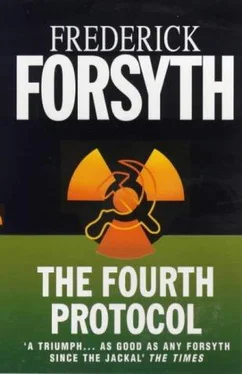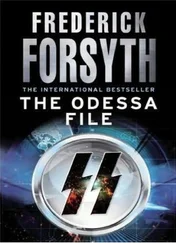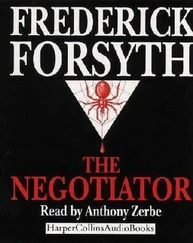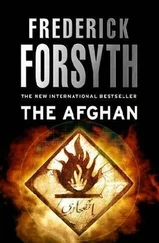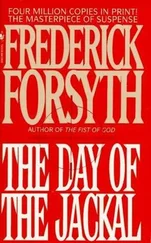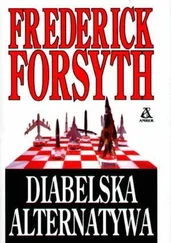Frederick Forsyth - The Fourth Protocol
Здесь есть возможность читать онлайн «Frederick Forsyth - The Fourth Protocol» весь текст электронной книги совершенно бесплатно (целиком полную версию без сокращений). В некоторых случаях можно слушать аудио, скачать через торрент в формате fb2 и присутствует краткое содержание. Жанр: Политический детектив, на английском языке. Описание произведения, (предисловие) а так же отзывы посетителей доступны на портале библиотеки ЛибКат.
- Название:The Fourth Protocol
- Автор:
- Жанр:
- Год:неизвестен
- ISBN:нет данных
- Рейтинг книги:3 / 5. Голосов: 1
-
Избранное:Добавить в избранное
- Отзывы:
-
Ваша оценка:
- 60
- 1
- 2
- 3
- 4
- 5
The Fourth Protocol: краткое содержание, описание и аннотация
Предлагаем к чтению аннотацию, описание, краткое содержание или предисловие (зависит от того, что написал сам автор книги «The Fourth Protocol»). Если вы не нашли необходимую информацию о книге — напишите в комментариях, мы постараемся отыскать её.
The Fourth Protocol — читать онлайн бесплатно полную книгу (весь текст) целиком
Ниже представлен текст книги, разбитый по страницам. Система сохранения места последней прочитанной страницы, позволяет с удобством читать онлайн бесплатно книгу «The Fourth Protocol», без необходимости каждый раз заново искать на чём Вы остановились. Поставьте закладку, и сможете в любой момент перейти на страницу, на которой закончили чтение.
Интервал:
Закладка:
In late 1944 the survivors of Auschwitz were force-marched westward and Zablonsky ended up in Bergen-Belsen, where, more dead than alive, he was finally freed by the British Army. After intensive hospitalization Zablonsky, having been sponsored by a North London rabbi, was brought to Britain, and after further rehabilitation he became a jeweler’s apprentice. In the early 1960s he had left his employer for his own shop in the East End. Ten years later, he had opened the present, more prosperous establishment in the West End.
It was in the East End, down in the dockland, that he had first started to handle gems imported by seamen—emeralds from Ceylon, diamonds from Africa, rubies from India, and opals from Australia. By the mid-1980s Zablonsky was a wealthy man from both his enterprises, the legitimate and the illicit. He was one of the top fences in London, a specialist in diamonds, and owned a large detached house in Golders Green, where he was a pillar of his community.
Now he tugged the last of the forty smaller stones from their settings and checked to see that he had missed none. He counted the stones and began to weigh them. Forty in all, averaging half a carat but mostly smaller. Engagement-ring stuff, but worth about
£12,000 in all. He could pass them through Hatton Garden and no one the wiser. Cash deals—he knew his contacts. He began to crush the white-gold settings into a shapeless mass.
When the gold was a mangled blob of metal, he dropped the lump into a bag along with other scrap. He saw Sandra off the premises, closed the shop, tidied up his office, and left, taking the four primary stones with him. On the way home he made a phone call from a public box to a number in Belgium, a number situated in a small village, called Nijlen, outside Antwerp. When he got home he rang British Airways and booked a flight for the morrow to Brussels.
Along the shore of the River Thames, on its southern bank, where once had stood the rotting wharves of a dying dockland, a huge redevelopment program had been continuing through the early and mid-1980s. The program had left great swaths of demolished rubble between the new buildings, moonscapes where the rank grass tangled with the fallen bricks and dust. One day, it was intended, all would be covered by new apartment buildings, shopping malls, and multistory garages, but when that would be was anybody’s guess.
In warm weather the winos camped out in these wastelands and any South London
“face” wishing to lose a piece of evidence had but to take the article to the center of these abandoned places and burn it to extinction.
Late on the evening of Tuesday, January 6, Jim Rawlings was walking across an area of several acres, stumbling in the dark as he tripped over unseen chunks of masonry. Had anyone been observing him—and no one was—he would have seen that Rawlings carried in one hand a two-gallon can of gasoline and in the other a beautiful handcrafted calfskin attaché case.
Louis Zablonsky passed through Heathrow Airport on Wednesday morning with no trouble. With heavy greatcoat and soft tweed hat, hand luggage and big briar pipe jutting from his jaw, he joined the daily flow of businessmen from London to Brussels.
On the plane, one of the stewardesses leaned over him and whispered, “I’m afraid we can’t allow you to light the pipe inside the cabin, sir.” Zablonsky apologized profusely and stuffed the briar in his pocket. He did not mind. He did not smoke, and even if he had lit it, it would not have drawn very well. Not with four pear-shaped fifty-eight-facet diamonds crammed into the base below the tamped tobacco.
At Brussels National he rented a car and headed north up the motorway out of Zaventem toward Mechelen, where he pulled right and northeast to Lier and Nijlen.
The bulk of the diamond industry in Belgium is centered upon Antwerp and is specifically located in and around the Pelikaanstraat, where the big enterprises have their showrooms and workshops. But like most industries, the diamond business depends for a part of its functioning upon a mass of small suppliers and outside workers, one-man operations working out of their ateliers, to whom can be subcontracted some of the manufacture of settings, cleaning, and repolishing.
Some of these outside workers also live in Antwerp, and Jews, many of East European origin, are predominant among them. But east of Antwerp lies an area known as Kempen, a cluster of neat villages in which are also located scores of small shops that undertake work for the Antwerp industry. In the center of Kempen lies Nijlen, astride the main road and rail lines from Lier to Herentals.
Halfway down the Molenstraat lived one Raoul Levy, a Polish Jew who had settled in Belgium after the war and who also happened to be a second cousin of Louis Zablonsky of London. Levy was a diamond polisher, a widower who lived alone in one of the small, neat, red-brick bungalows that line the western side of the Molenstraat. At the back of the house was his workshop. It was here that Zablonsky drove and met his relative a little after lunchtime.
They argued for an hour and struck their deal. Levy would repolish the four stones, losing as little of their weight as possible, but enough to disguise their identity. They settled on a fee of £50,000, half up front and half upon sale of the last stone. Zablonsky left and returned to London.
The trouble with Raoul Levy was not that he lacked skill; it was that he was lonely. So each week he looked forward to his one expedition. He loved to take the train into Antwerp, go to his favorite café, where all his cronies met in the evenings, and talk shop.
Three days later he went there and talked shop once too often.
While Louis Zablonsky was in Belgium, John Preston was installing himself in his new office on the second floor. He was glad he did not have to leave Gordon for another building.
His predecessor had retired at the end of the year, and the deputy head of C1(A) had been in charge for a few days, no doubt hoping he would be confirmed in the top man’s post. He took his disappointment well and briefed Preston copiously on what the job entailed, which seemed to Preston to be mainly grinding routine.
Left alone that afternoon, Preston cast his eye down the list of ministry buildings that came under A Section. It was longer than might be imagined, but most of the buildings were not security sensitive, save for leakages that might be politically embarrassing.
Document leaks concerning, for example, intended social security cuts were always a hazard since the civil service unions had recruited so many staffers with extreme-left political views, but they could usually be handled by the ministry’s in-house security people.
The big ones for Preston were the Foreign Office, Cabinet Office, and Defense Ministry, all of which received cosmic-rated papers. But each had pretty tight security, handled by its own internal-security team. Preston sighed. He started to make a series of phone calls, setting up getting-to-know-you meetings with the security chiefs in each of the principal ministries.
Between calls he glanced at the pile of personal stuff he had brought down from his old office, two floors above. Waiting for a call to be returned by some official otherwise engaged, he rose, unlocked his new personal safe, and put the files inside, one by one.
The last of them was his report of the previous month, his own copy. Other than the report he knew to have been NFA’ed in Registry, this was the only one in existence. He shrugged and put it at the back of the safe. It would probably never be examined again, but he saw no reason why he should not keep it, for old times’ sake. After all, his own copy had taken a hell of a lot of sweat to put together.
Chapter 3
Интервал:
Закладка:
Похожие книги на «The Fourth Protocol»
Представляем Вашему вниманию похожие книги на «The Fourth Protocol» списком для выбора. Мы отобрали схожую по названию и смыслу литературу в надежде предоставить читателям больше вариантов отыскать новые, интересные, ещё непрочитанные произведения.
Обсуждение, отзывы о книге «The Fourth Protocol» и просто собственные мнения читателей. Оставьте ваши комментарии, напишите, что Вы думаете о произведении, его смысле или главных героях. Укажите что конкретно понравилось, а что нет, и почему Вы так считаете.
